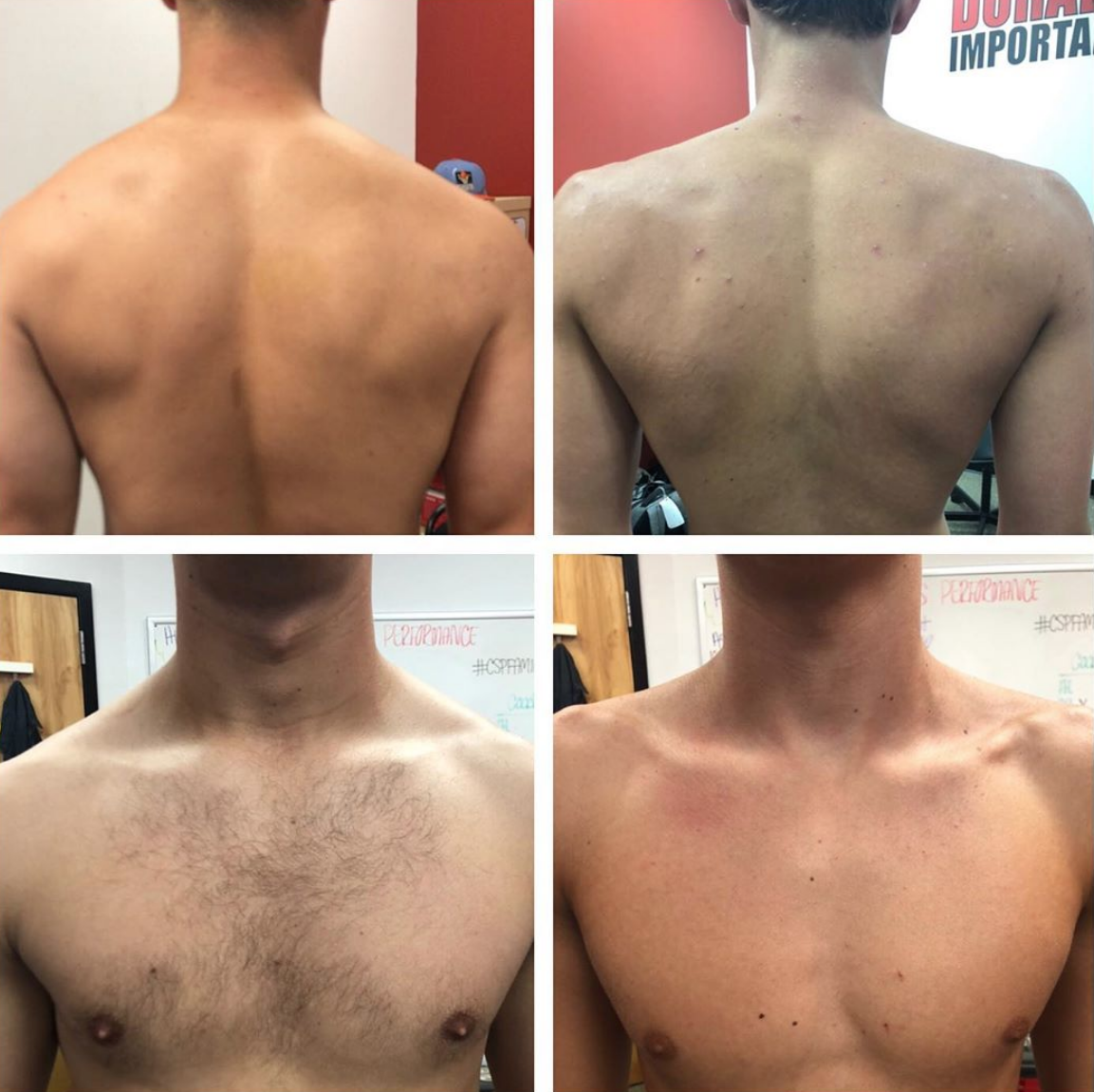
Pitchers vs. Swimmers
Not too long ago, I evaluated a baseball pitcher (left) and swimmer (right) back-to-back. It should serve as a reminder that not all overhead athletes are created equal – both in terms of the demands of their sports and the way they adapt to those demands.
The pitcher is a classic scapular depression example. Notice how “flat” the clavicle presentation is. He’s very lat dominant and struggles to get scapular elevation as part of upward rotation as the arms go overhead. He needs more upper trap activity.
Conversely, the swimmer is a scapular elevation presentation. Notice the significant upslope of the collarbone. He’s already so elevated that he struggles to get the rotational component of upward rotation. He needs more serratus anterior and lower trap, but less upper trap.
Three huge takeaways:
1. This is yet another reminder that you can’t just have a “rotator cuff program.” Both of these guys could present with the same pathology, but with completely different underlying movement diagnoses.
2. The same exercises might need to be coached differently for two different athletes
3. Whenever you see tightness, before you stretch it, ask why it’s there. With the pitcher in scapular depression, it’s a protective tension you don’t want to just stretch out. The swimmer could actually benefit.
I cover these topics in great detail in my Sturdy Shoulder Solutions resource; you can learn more at www.SturdyShoulders.com.




